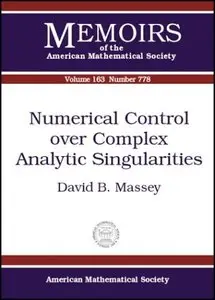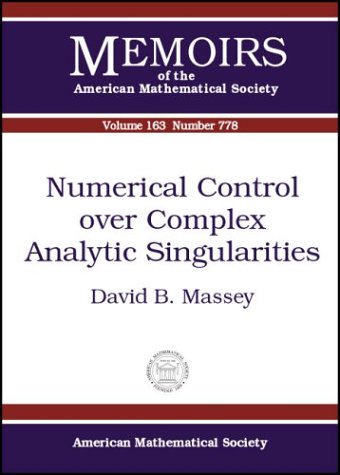Numerical Control over Complex Analytic Singularities (Memoirs of the American Mathematical Society) by David B. Massey
Amer Mathematical Society | May 1, 2003 | English | ISBN: 0821832808 | 268 pages | PDF | 3 MB
Amer Mathematical Society | May 1, 2003 | English | ISBN: 0821832808 | 268 pages | PDF | 3 MB
The Milnor number is a powerful invariant of an isolated, complex, affine hyper surface singularity. It provides data about the local, ambient, topological-type of the hyper surface, and the constancy of the Milnor number throughout a family implies that Thom's $a_f$ condition holds and that the local, ambient, topological-type is constant in the family. Much of the usefulness of the Milnor number is due to the fact that it can be effectively calculated in an algebraic manner.The Le cycles and numbers are a generalization of the Milnor number to the setting of complex, affine hyper surface singularities, where the singular set is allowed to be of arbitrary dimension. As with the Milnor number, the Le numbers provide data about the local, ambient, topological-type of the hyper surface, and the constancy of the Le numbers throughout a family implies that Thom's $a_f$ condition holds and that the Milnor fibrations are constant throughout the family. Again, much of the usefulness of the Le numbers is due to the fact that they can be effectively calculated in an algebraic manner.In this work, we generalize the Le cycles and numbers to the case of hyper surfaces inside arbitrary analytic spaces. We define the Le-Vogel cycles and numbers, and prove that the Le-Vogel numbers control Thom's $a_f$ condition. We also prove a relationship between the Euler characteristic of the Milnor fibre and the Le-Vogel numbers. Moreover, we give examples which show that the Le-Vogel numbers are effectively calculable. In order to define the Le-Vogel cycles and numbers, we require, and include, a great deal of background material on Vogel cycles, analytic intersection theory, and the derived category. Also, to serve as a model case for the Le-Vogel cycles, we recall our earlier work on the Le cycles of an affine hyper surface singularity.



